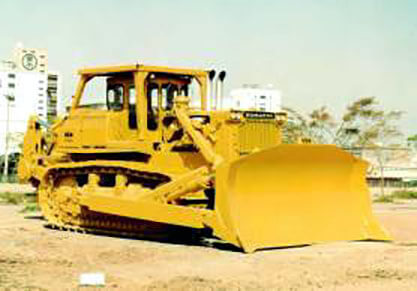1970
Since this era, the focus of domestic demand gradually started shifting from bulldozers to hydraulic shovels. Additional considerations, such as ease of operation, also became an important aspect of design.

There was high demand for larger bulldozers from the United States, Australia, and Soviet Union. However, Caterpillar Inc, the No.1 company in the industry, concluded that it was impossible to produce a bulldozer with larger than 500HP output given the level of technology for heat treatment and such back then.
Komatsu decided to begin development of a bulldozer in a class that was unexplored by Caterpillar. It took Komatsu 5 years and 9 months to develop this model.
Output: 620HP, Weight: 76000kg
Bulldozer
Since its first emergence in 1951, it took only 50 years for the hydraulic shovel to establish its primary position on construction sites worldwide. Its size ranges from mini to super size depending on the scale of construction, and during the half century, it kept evolving by achieving a minimum rear-swing radius and adapting styles that would work with characteristics of each site. Mirroring the movement of a human hand, a hydraulic shovel will continue to evolve during the 21st century.